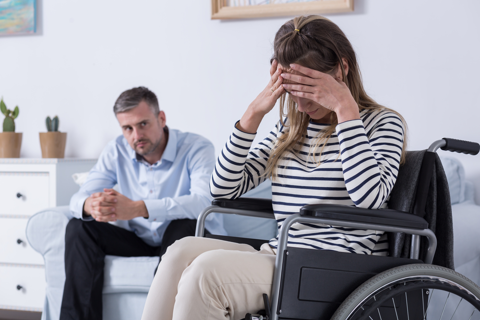Six Facts About People with Disabilities and Domestic Violence
Did you know …
- People with disabilities have a higher lifetime prevalence of experiencing abuse than people without disabilities.
- People with disabilities experience violent crime at twice the rate of people without disabilities.
- People with disabilities are three times as likely to be sexually assaulted as their peers without disabilities.
- In 2008, intimate partners perpetrated 27% of violent crime against women with disabilities and 1.1% of crime against men with disabilities.
- Police are less likely to respond to reported violence against victims with
 disabilities than they are to reported violence against victims without disabilities. Police respond to 90% of reports by victims without disabilities and 77% of reports by victims with disabilities.
disabilities than they are to reported violence against victims without disabilities. Police respond to 90% of reports by victims without disabilities and 77% of reports by victims with disabilities. - A survey conducted by the Spectrum Institute Disability and Abuse Project found that 70% of respondents with disabilities experienced some form of abuse by an intimate partner, family member, caregiver, acquaintance or stranger. Of those …
* 87.2% experienced verbal/emotional abuse
* 50.6% experienced physical abuse
* 41.6% experienced sexual abuse
* 37.4% experienced neglect
* 31.5% experienced financial abuse
* 37.3% reported the abuse to law enforcement
* Alleged perpetrators were arrested in 10% of abuse cases reported to law enforcement.
What Does Domestic Violence Look Like for a Victim with a Disability?
- Verbal and psychological abuse

- Physical violence
- Unwanted sexual contact
- Threats and intimidation
- Neglect
- Withholding medications
- Physically harming service animals
- Isolating victims
- Depriving victims of necessary physical accommodations
- Withholding or destroying assistive devices such as wheelchairs
- Financially exploiting victims and misusing victims’ money
Why It Matters
 The term “disability” encompasses many forms and degrees of impairments, including physical, developmental and psychological disabilities.
The term “disability” encompasses many forms and degrees of impairments, including physical, developmental and psychological disabilities.
Women with disabilities are uniquely vulnerable to all forms of violence, including intimate partner violence. They are significantly more likely to experience physical, sexual, and psychological abuses and stalking than their peers without disabilities. They are also more likely to experience intimate partner control of reproductive and sexual health than women without disabilities.
Men with disabilities are more likely to experience stalking and psychological abuse than their peers without disabilities.
Furthermore, violence against people with disabilities is not recognized by society to be a significant problem, and the needs of victims and survivors are often ignored. Barriers to accessing services compound the impact of violence against people with disabilities.
How to Help
One of the most effective ways to assist victims of domestic violence with disabilities is to make resources more available and inclusive.
- Encourage local shelters and hotlines to specifically train staff to
 work with victims and survivors with disabilities.
work with victims and survivors with disabilities. - Encourage shelters, social service agencies and hospitals to develop a referral list of organizations in the area that specialize in the intersection of domestic violence and disability.
- Ensure local health care professionals are properly screening patients with disabilities for domestic violence.
- Educate staff at social service agencies that assist people with disabilities to recognize the signs of domestic violence and to respond appropriately.
- Encourage social service agencies, hospitals, houses of worship, and other organizations to have domestic violence information and resources available and visibly displayed that are oriented to populations with specific disabilities (people who are blind, people who are deaf, people with limited mobility, people with mental illness, people with developmental disabilities, etc.)
Content retrieved from: https://ncadv.org/blog/posts/domestic-violence-and-people-with-disabilities.

